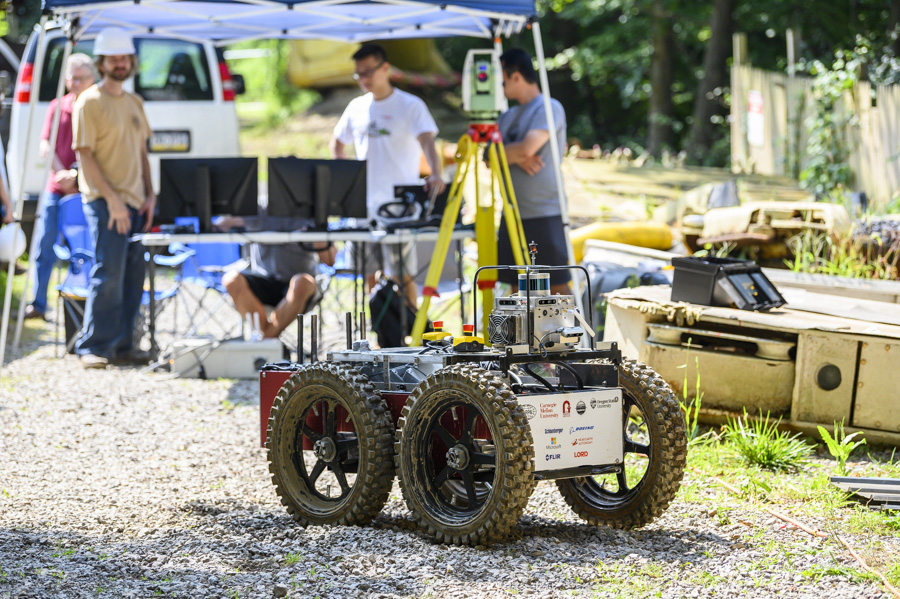Graduate Student To Operate Base Station in Subterranean Challenge
Kevin Pluckter clicks his computer mouse while sitting in front of dual monitors at a base station just outside the entrance to the Tour-Ed Mine in rural western Pennsylvania. The mine has served as a training base for Explorer, a team of Carnegie Mellon University and Oregon State University researchers competing in the $2 million DARPA Subterranean Challenge.
Pluckter's clicking instructs Rocky 2, a custom-built unmanned ground vehicle, to enter the mine and begin autonomously exploring the underground environment. As Rocky 2 begins to rove, it periodically stops to drop WiFi node boxes, a trail of digital breadcrumbs allowing it to communicate with Pluckter's base station.
Rocky 2 crunches gravel beneath its wheels as it travels farther into the tunnel. Mapping data flows back to Pluckter's screen, showing him a 3D map of the mine on an in-house designed graphical user interface, or GUI, along with any artifacts discovered en route, like fire extinguishers or simulated human survivors.

Researchers from CMU prepare to run a test in the Tour-Ed Mine.
The first circuit of actual competition will be held in a research mine operated by the National Institute for Occupational Safety and Health in South Park Township, Pennsylvania. Eleven teams will participate. Pluckter will be the base station operator for Explorer during the competition.
"The competition is full of challenges, like rough terrain and fog or smoke that will make perception and planning difficult," Pluckter said. "Communicating with our robots in the mine is complex as well. It's exciting to push technology forward to the point where it can operate in the field in search and rescue scenarios."
Pluckter is studying to receive his master's degree in robotics at CMU. He focuses on computer vision and planning algorithms. Originally from Atlanta, he received his undergraduate degree from Georgia Tech. This summer, he's put over 40 hours each week into his work on the Explorer team.
He has worked in various capacities with the team, including helping to develop its high-level decision-making algorithm. The team decided to use behavior trees for its algorithm, which can be reconfigured quickly and allowed for adaptivity.
"None of this would be possible without the phenomenal team and leadership we have," Pluckter said. "Sebastian Scherer and Matt Travers lead us fearlessly."
As for the competition, Pluckter is confident in team Explorer and motivated by seeing his work find real-world use.
"The next circuit of the challenge is going to be urban, like a subway," Pluckter said. "In that environment, if you had an earthquake or terror attack, first responders have to go in slowly and examine the scene. By sending in robots first and identifying points of interest, like potentially noxious gas leaks or unstable surroundings, we can help responders determine safe points of entry, faster."